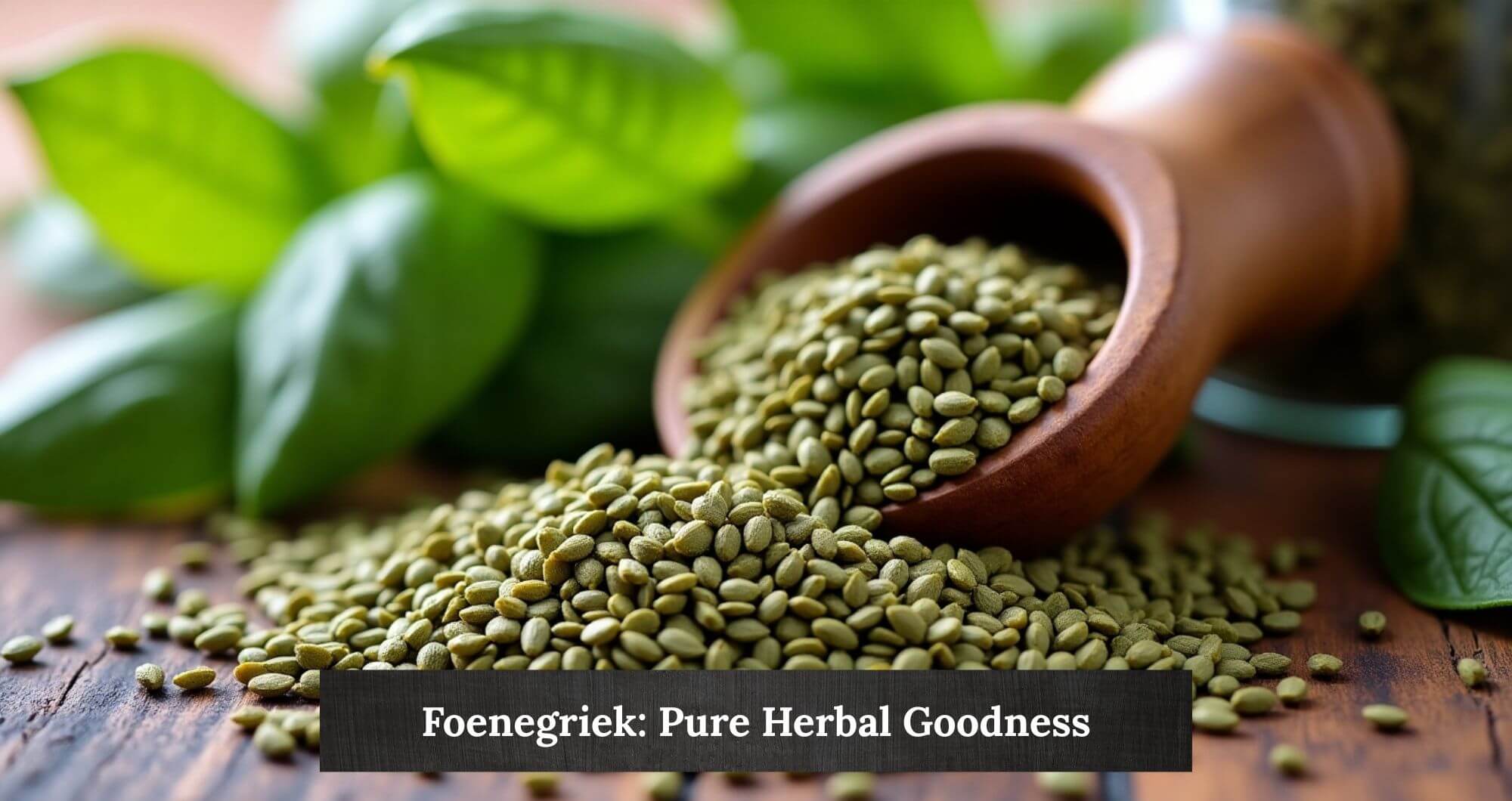Foenegriek: The Ancient Herb with Modern Health Benefits

Foenegriek, also known as fenugreek, is an herb that has been treasured for centuries across cultures and continents. From Ayurvedic medicine to Mediterranean cuisine, foenegriek holds a vital place in both healing traditions and flavorful cooking. Though the herb has ancient roots, its benefits remain just as relevant today, thanks to modern research confirming its versatile health properties.
In this comprehensive article, we’ll explore the origins, uses, and science-backed benefits of foenegriek, its application in modern wellness, how to use it effectively, and what precautions to take.
Understanding Foenegriek: A Brief Introduction
Foenegriek is a plant native to the Mediterranean, southern Europe, and Asia. It belongs to the Fabaceae family, and both its seeds and leaves are widely used. While the leaves are often consumed as a green vegetable in many Indian and Middle Eastern dishes, the seeds—tiny, golden, and bitter—are typically used as a spice or health supplement.
The name “foenegriek” is derived from Latin foenum-graecum, meaning “Greek hay,” as it was traditionally used as cattle fodder. Today, however, it is better known for its positive impact on human health.
Historical and Cultural Significance of Foenegriek
For thousands of years, foenegriek has held an important place in ancient medicine systems such as Ayurveda and Traditional Chinese Medicine (TCM). In Egypt, it was used in embalming rituals and believed to ease childbirth. In Greece and Rome, foenegriek was a valued health tonic and food additive.
Its bitter yet nutty flavor has made it a staple in Indian spice blends like garam masala and in Ethiopian berbere. The herb’s widespread cultural relevance is a testament to its enduring appeal.
Nutritional Profile of Foenegriek
Foenegriek is rich in essential nutrients that contribute to its medicinal value. Here’s a look at what makes it so potent:
-
Protein: Especially beneficial for vegetarians.
-
Fiber: Promotes digestive health.
-
Iron: Essential for oxygen transport in the blood.
-
Magnesium: Important for muscle and nerve function.
-
Vitamin B6: Vital for brain development and function.
-
Antioxidants: Help combat free radicals.
This unique combination of nutrients makes foenegriek both a functional food and a powerful supplement.
Health Benefits of Foenegriek
Modern scientific studies have validated many traditional claims about foenegriek. Here are some of the key health benefits backed by evidence:
1. Regulates Blood Sugar Levels
Foenegriek is often used by people with type 2 diabetes to help regulate blood glucose. Its seeds contain soluble fiber, which slows down carbohydrate digestion and absorption.
2. Supports Digestive Health
The fiber in foenegriek helps ease constipation and promotes regular bowel movements. It also acts as a prebiotic, feeding good bacteria in the gut.
3. Boosts Testosterone and Libido
Research shows that foenegriek may increase testosterone levels in men, which can enhance libido and physical performance.
4. Helps in Lactation
Foenegriek is a popular galactagogue (milk enhancer) used by breastfeeding mothers. It can stimulate milk production naturally when taken in moderate doses.
5. Aids in Weight Management
The herb’s high fiber content promotes satiety, which helps in reducing overall calorie intake and supports weight management goals.
6. Reduces Inflammation
With its antioxidant and anti-inflammatory properties, foenegriek can help in conditions like arthritis and muscle pain.
Culinary Uses of Foenegriek
Beyond its medicinal value, foenegriek adds flavor and depth to various cuisines:
1. Seeds
The seeds are usually roasted or soaked to reduce bitterness and enhance flavor. They’re used in:
-
Curries and lentil stews
-
Spice blends (e.g., panch phoron, sambar powder)
-
Pickles and chutneys
2. Leaves
Fresh or dried leaves, known as methi in Indian cuisine, are used in:
-
Flatbreads like methi paratha
-
Vegetable dishes
-
Soups and stir-fries
3. Sprouts and Powders
Foenegriek can also be sprouted for salads or ground into powder to add to smoothies, teas, or supplements.
How to Use Foenegriek for Health
Depending on the intended use, foenegriek can be consumed in several ways:
-
Capsules/Tablets: Easy to include in a supplement routine.
-
Tea: Soak a teaspoon of seeds overnight and boil the next morning.
-
Powder: Add to warm water or sprinkle over meals.
-
Soaked Seeds: Eat on an empty stomach for better digestion.
Start with small doses (about 500 mg to 1 gram per day) and consult a healthcare professional if you’re pregnant, breastfeeding, or taking medications.
Scientific Studies on Foenegriek
Several clinical studies affirm the benefits of foenegriek:
-
A study published in the International Journal for Vitamin and Nutrition Research showed improved glucose tolerance in diabetic patients who consumed foenegriek powder daily.
-
According to the Journal of the International Society of Sports Nutrition, foenegriek supplementation resulted in higher testosterone levels and improved strength in male athletes.
-
A 2011 study in Breastfeeding Medicine confirmed increased milk volume in lactating mothers after three weeks of foenegriek seed consumption.
These studies highlight the growing interest of the scientific community in this ancient herb.
Precautions and Side Effects
Though foenegriek is generally safe for most people, it’s important to be aware of potential side effects:
-
Gastrointestinal discomfort: Especially at higher doses.
-
Allergic reactions: Rare, but possible in sensitive individuals.
-
Hypoglycemia: Can occur in people on diabetes medication if dosage isn’t adjusted.
-
Pregnancy risks: High doses may stimulate uterine contractions.
Always consult a doctor before using foenegriek as a supplement, especially if you’re pregnant or have underlying health conditions.
Foenegriek in Modern Wellness Trends
With the rise in plant-based wellness solutions, foenegriek has found its place in the modern health and fitness industry. It is now featured in:
-
Hormone balance supplements
-
Protein powders for athletes
-
Herbal teas for detox and digestion
-
Beauty products targeting skin clarity and hair growth
This wide application underscores foenegriek’s relevance in today’s health-conscious world.
Sustainability and Cultivation of Foenegriek
Foenegriek is a hardy crop that grows well in semi-arid climates. It is primarily cultivated in countries like India, Egypt, Morocco, and parts of Europe. Its ability to improve soil health through nitrogen fixation also makes it beneficial in crop rotation practices.
Efforts to promote sustainable foenegriek farming are increasing, especially with the global demand on the rise.
Conclusion: Why Foenegriek Deserves a Place in Your Lifestyle
Whether you’re interested in natural remedies, better digestion, hormone support, or simply delicious cooking, foenegriek is a versatile and potent herb worth considering. Its benefits are time-tested, scientifically backed, and increasingly embraced by holistic health communities worldwide.
By understanding how to use foenegriek properly and safely, you can unlock its full potential—adding not just flavor to your food, but also value to your health.




